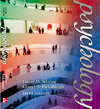For General Works on Cognition Altarriba, J. (Ed.). (1993). Cognition and culture: A cross-cultural approach to psychology. New York: Elsevier. Gardner, H. (1985). The mind's new science: A history of the cognitive revolution. New York: Basic Books. Medin, D. L., and Ross, B. M. (1997). Cognitive psychology. (2nd ed.). San Diego: Harcourt Brace. For More on Concept Formation Harnad, S. (1990). Categorical perception. New York: Cambridge University Press. Lakoff, G. (1987). Women, fire, and dangerous things. Chicago: University of Chicago Press. For More on Problem Solving Bransford, J. D., and Stein, B. S. (1993). The ideal problem solver: A guide to improving thinking, learning, and creativity. New York: W. H. Freeman. Mayer, R. E. (1991). Thinking, problem solving, and cognition (2nd ed.). New York: W. H. Freeman. Sternberg, R. J., and Davidson, J. E. (Eds.). (1995). The nature of insight. Cambridge, MA: MIT Press. For More on Creativity Dacey, J. S., and Lennon, K. (1999). Understanding creativity: The interplay of biological, psychological, and social factors. San Francisco: Jossey-Bass. Freeman, M. (1993). Finding the muse: A socio-psychological inquiry into the conditions of artistic creativity. New York: Cambridge University Press. Runco, M. A. (1991). Divergent thinking. Norwood, NJ: Ablex. Weisberg, R. W. (1993). Creativity: Beyond the myth of genius. New York: W. H.Freeman. For More on Decision Making Gilovich, T. (1993). How we know what isn't so: The fallibility of human reason in everyday life. New York: Free Press. Kahnemann, D., Skovic, P., and Tversky, A. (Eds.). (1982). Judgment under uncertainty: Heuristics and biases. New York: Cambridge University Press. Nisbett, R., and Ross, L. (1985). Human inference: Strategies and shortcomings of social judgment. Englewood Cliffs, NJ: Prentice Hall. Plous, S. (1993). The psychology of judgment and decision making. New York: McGraw-Hill. For More on Artificial Intelligence Boden, M. A. (1989). Artificial intelligence in psychology. Cambridge, MA: MIT Press. Crevier, D. (1993). AI: The tumultuous history of the search for artificial intelligence. New York: Basic Books. Newborn, M. (1997). Kasparov and Deep Blue: Computer chess comes of age. New York: Springer. For General Works on Language Carroll, D. W. (1995). Psychology of language (2nd ed.). Monterey, CA: Brooks/Cole. Whitney, P. (1998). Psychology of language. Boston: Houghton Mifflin. For More on Language Acquisition Chomsky, N. (1985). Knowledge of language: Its nature, origin, and use. New York: Praeger. Curtiss, S. (1977). Genie: A psycholinguistic study of a modern-day "wild child." New York: Academic Press. Hoff-Ginsberg, E. (1998). Language development. Belmont, CA: Brooks-Cole. Oxford, R. L. (Ed.) (1997). Language learning strategies and theories: Cross-cultural perspectives. Honolulu: University of Hawaii Press. Skinner, B. F. (1957). Verbal behavior. Englewood Cliffs, NJ: Prentice Hall. For More on the Relationship Between Language and Thinking Berlin, B., and Kay, P. (1989). Basic color terms: Their universality and evolution. Berkeley: University of California Press. Lucy, J. A. (1992). Language diversity and thought: A reformulation of the linguistic-relativity hypothesis. New York: Cambridge University Press. Pullum, G. K. (1991). The great Eskimo vocabulary hoax, and other irreverent essays on the study of language. Chicago: University of Chicago Press. Whorf, B. L. (1956). Language, thought, and reality: Selected writings of Benjamin Lee Whorf (J. B. Carroll, Ed.). Cambridge, MA: MIT Press. For More on Ape Language Patterson, F., and Linden, E. (1981). The education of Koko. New York: Holt, Rinehart and Winston. Premack, D. (1986). Gavagai! The future history of the ape language controversy. Cambridge, MA: MIT Press. Savage-Rumbaugh, S., and Lewin, R. (1994). Kanzi: The ape at the brink of the human mind. New York: Wiley. Savage-Rumbaugh, E. S., Shanker, S., and Taylor, T. J. (1998). Apes, language, andthe human mind. New York: Oxford University Press. Terrace, H. S. (1986). Nim: A chimpanzee who learned sign language. Irvington, NY: Columbia University Press. For More on Contributors to the Study of Thinking and Language Bjork, D. W. (1993). B. F. Skinner: A life. New York: Basic Books. Bruner, J. (1983). In search of mind: Essays in autobiography. New York: Harper and Row. Haley, M. C., and Lunsford, R. F. (1993). Noam Chomsky. New York: Macmillan. Kessel, F. S. (Ed.). (1987). The development of language and language researchers: Essays in honor of Roger Brown. Hillsdale, NJ: Erikson. Ley, R. (1990). A whisper of espionage: Wolfgang Kohler and the apes of Tenerife. Garden City, NY: Avery. Simon, H. A. (1991). Models of my life. New York: Basic Books. | 


 2002 McGraw-Hill Higher Education
2002 McGraw-Hill Higher Education